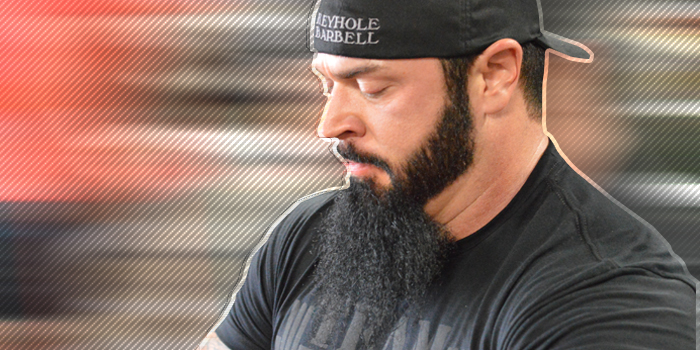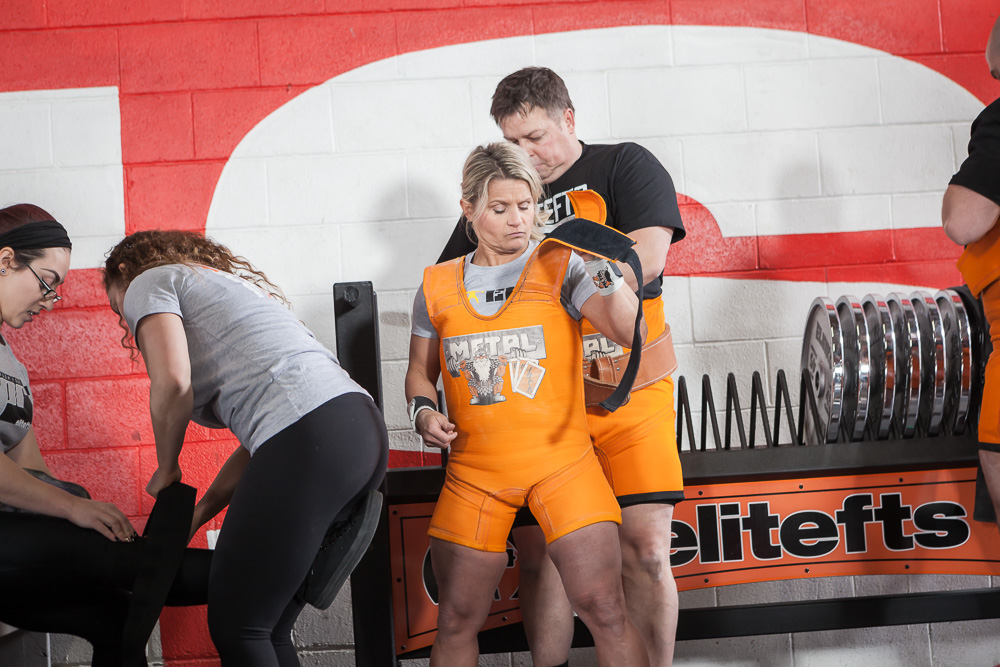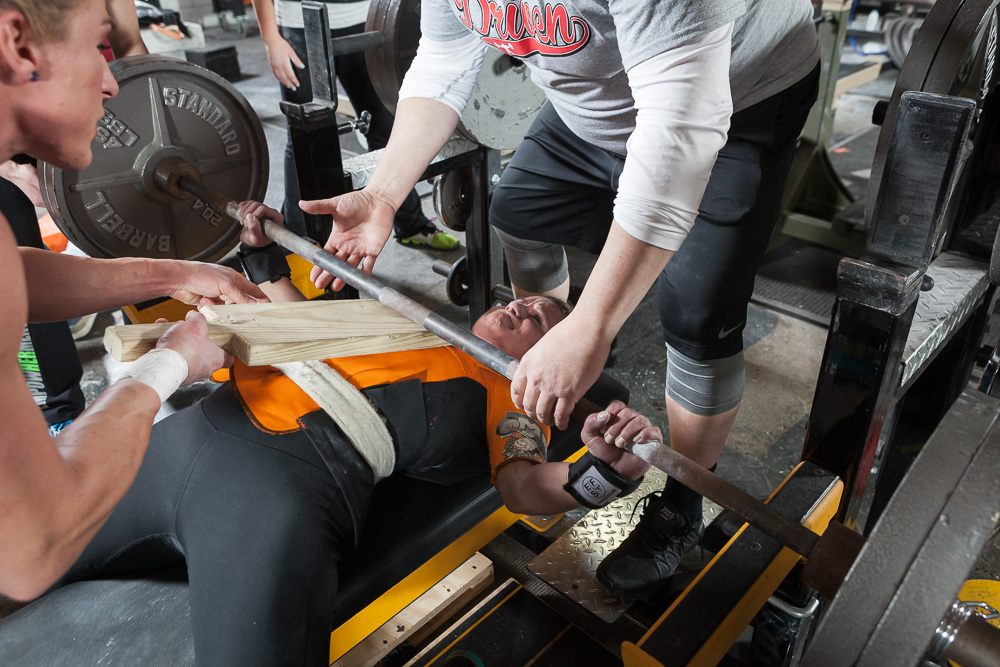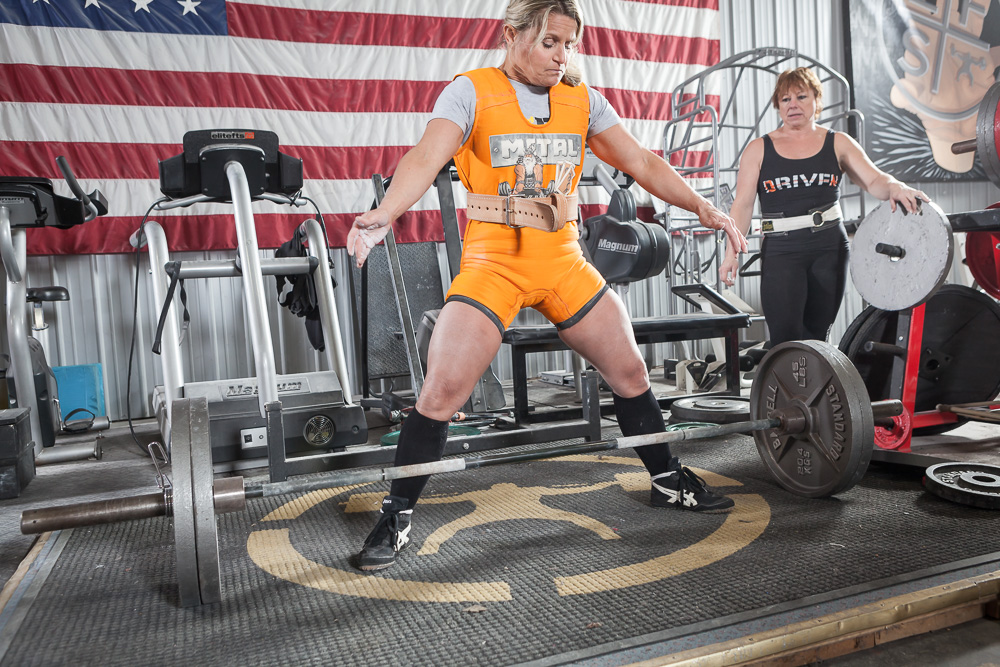
Have you ever wondered, as you scroll through your various newsfeeds on social media, how some lifters manage to hit heroic lifts in their training videos that are so much heavier than what they ever end up pulling together in a meet?
I lost sleep over it for a while. I mean, if a lifter is able to get these numbers ever in their life, why would they not make it on the platform? You know, where it actually counts for something?
Every reason you can imagine, I have imagined. I've played every scenario out in my mind. Is the lifter wearing briefs in their training video to hit a higher number? Why would they train in gear, knowing that performing raw in competition will be so drastically different? Is the spotter really helping that much? Why is the fucking spotter helping at all, again, knowing that performing in competition will be so drastically different? Is the lifter's grip really so weak that when they take off the straps, their pull goes down 80 pounds? If so, why are they training with straps in the first place, knowing they won't be able to do so in competition?
Could these people really be doing this idiotic bullshit for the "likes?"
RECENT: Choices and Accountability
Sadly, the answer to that question is a resounding "YES." But taking a closer look, I realized that this was much bigger problem than cheating in training. The number one overarching cause for the huge discrepancy between training video lifts and meet lifts seems to be a widespread, complete and utter lack of understanding of the importance of training for peak performance in competition. I'd like to say this phenomenon is exclusive to novice competitors, but it's tentacles reach to some of the strongest people on the planet.
And that's where things get frustrating, because we almost expect newbies to do dumb shit. They are new, it's part of the learning process. But there is no excuse for a lifter who competes at a high level to be consistently doing this. So if you are one of these, beginner or advance, right now, I am going to start talking to you. If the shoe fits, lace that motherfucker up. (If not, read along and learn more about the subject.)
Maybe you don't know how to set up programming to get your lifts done where they count. If that is the case, hire a coach who does! I would love to help you. I do know about fifteen other awesome coaches who could make it happen for you, if you don't want to work with someone as handsome and charming as myself. That can be quite a distraction, I understand.
Do you not have enough money to work with a professional coach? That's hard to believe, but even if it's true, I have a book you may have heard of called 5thSet for Powerlifting. Inside you will find an entire chapter which will teach you how to peak for a meet. That, and just about everything else you need to know to keep from embarrassing yourself at a powerlifting meet, all for about the price of a singlet.
The book makes things thoughtless and lays out some very easy framework for you to follow, with specific testing and percentages to not only select all of your attempts for the meet, but also dial in and wind down correctly so that you will perform best where it counts: on the platform.
With that said, as is my usual method of teaching, I will never present a problem and not offer a solution. So here are some general recommendations to avoid the problems I outlined above. And I'm going to keep this pretty general, because these concepts are not the science of rockets.
Overreaching
In order to peak for a powerlifting meet, you will need a period of overreaching. In other words, you cannot just decide "hey, I want to peak for a powerlifting meet," then pick a meet six weeks down the road and run a peaking cycle for it. There has to be a period of overreaching before the peaking cycle begins, in order for this to work the way we want it to.
During this period of overreaching, you should be imposing strength-specific demands in your training. That is to say the meat of your work for the three competitive lifts should be performed in the two to five rep range. Assistance work may be geared toward hypertrophy or more toward specific weaknesses, depending on the needs of the lifter. This period should usually span one to three mesocycles or at least a couple of months.
The workload should be set low enough that you can recover from microcycle to microcycle, but high enough that a microcycle (7-10 days) of reduced work (or a deload) will be necessary every mesocycle (or every couple of months).
Peaking
One you have accumulated sufficient fatigue, ideally around 30-35 days out from a meet, you'll want to begin a peaking cycle.
There are quite a few ways to do this, but generally speaking, all of them will involve some extreme overreaching in the competitive movements, in the early weeks of this cycle. Most schemes will have you doing less work, if any, for hypertrophy during this early period, while almost all work for the main movements will be singles. The objective is to increase specific physical preparedness (SPP) as the meet approaches by pushing overreaching about as far as possible in this manner, before dialing things back with a period of reduced work.
WATCH: Table Talk — Learning From Novice Mistakes
Usually around 14-18 days out from the meet the objective switches to maintaining your current level of fitness while reducing the fatigue you've accumulated. That's right; at this point you are just trying to maintain, which means the total amount of work is going to drop drastically. The percentages you will work with should drop also. So if you're doing your second attempts one week out, in my opinion, you're fucking up.
During this period, preparedness (the ability to perform at a maximal level) will increase and hopefully "peak." This is what Verkhoshansky referred to as the long-term delay to the training effect.
Results
I'm sure you are wondering what you will gain in return for the glory you will lose by not competing in the YouTube Olympics right up to your meet. Well, for one, you hopefully will not shoot any vertebral discs across the room while performing fatigued, rounded back maxes every single week on every lift. And beyond that, if you pull off what I outlined above correctly, you can expect gains in performance to the tune of four to six percent on every lift in the meet compared to training.
Sound crazy? How do I know? These are not arbitrary figures. I've been doing this a long time and I keep meticulous records. In the beginning of the peaking cycle I take fatigued maxes for each lift, for all of my lifters. Then, in the meet, when they are peaked, they give me new maxes on the platform. The second set of numbers are on average 4-6% greater than the first. Pretty much every day of the week, four percent is safe.
Now, you can take any advice and be an asshole with it. Don't do that. If the second attempt in the meet is a grinder, adjust accordingly and don't go to 104% for the third. Even better, hire a coach to make these calls for you.
With that, I have hopefully made another worthwhile contribution to what is right in the world of powerlifting. For a more in-depth, step-by-step guide to thoughtlessly peaking for a meet, as well as everything else you need to know to be successful in the sport, buy my complete methodology, 5thSet for Powerlifting, today. I also spend one or two weekends per month traveling the country to work with lifters, teaching about powerlifting and correcting technique, hands-on, at my Reclaiming Real Strength seminars. I can't emphasize enough how much of a difference proper technique can make in your performance. Don't pass up the opportunity to attend one of these. I have dates coming up in NJ and NY in early February.













